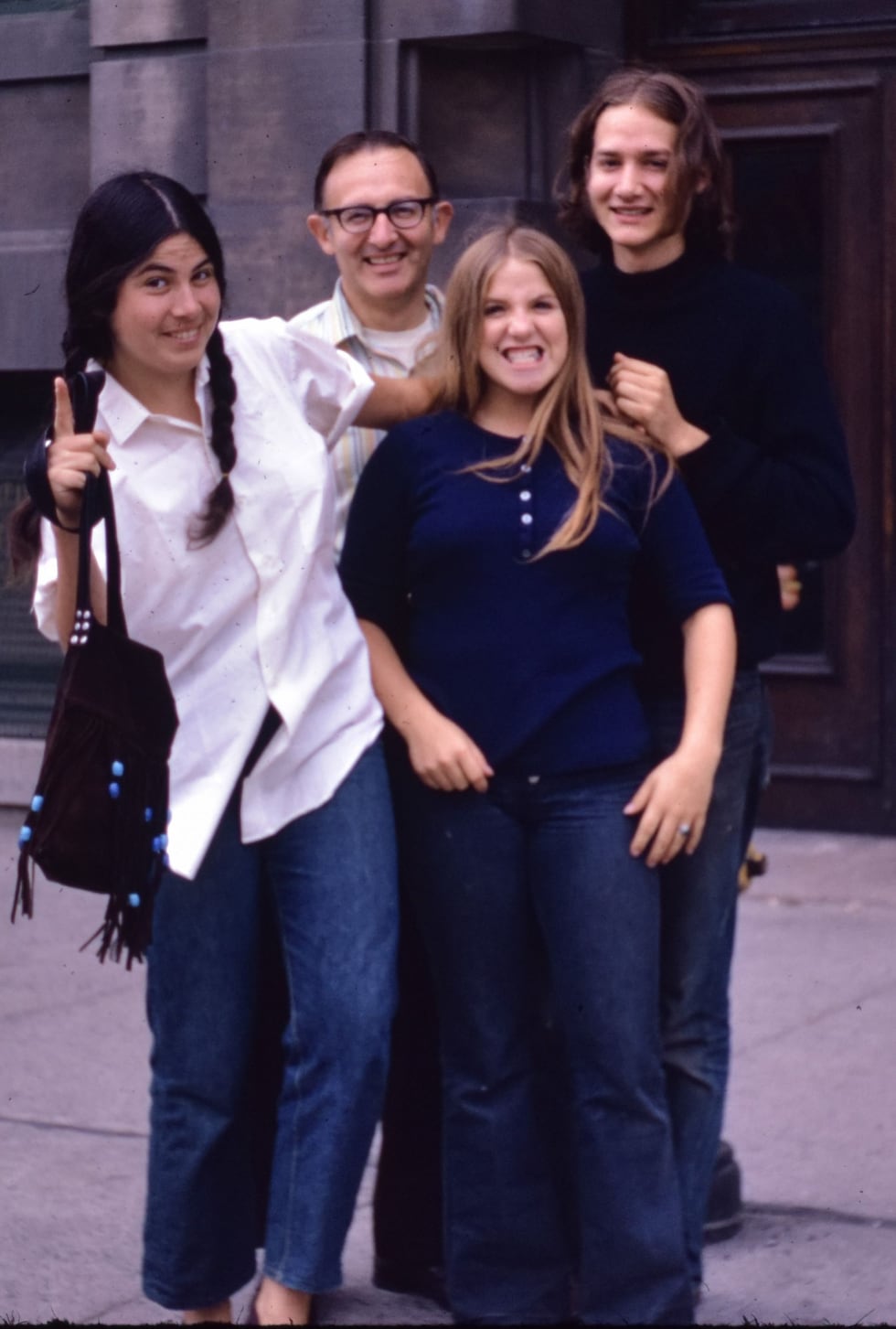One single day.
That’s all it took for citizen scientists to solve a cold case that left police stumped for more than 40 years.
Using revolutionary new technology, a team of volunteer genealogists recently connected a set of bones found in a Canadian forest to a Northeast Ohio man who went missing more than a half century ago.
Eric “Ricky” Singer was just 22 years old when he vanished without a trace in the fall of 1973.
Before he went missing, the Berea native had moved back in with his parents and younger sister after spending time traveling abroad.
“October 3, 1973, was the last time I saw him,” said Merry Singer Lugasy. “Ricky had been exploring Canadian options after dropping out of college in 1970 and receiving his draft card for Vietnam. He did not get drafted, but he continued to spend time in Canada over the next few years. Suddenly, he disappeared on his bike with a backpack and we never heard from him again.”

Eric "Ricky" Singer with father and sisters, Ruth and Merry
(Ontario Provincial Police)
Singer’s family filed a missing persons report and hired a private investigator to try to find him. They even conducted their own searches through various missing persons organizations without any luck.
In April 1980, a hiker found a human skull after veering off a trail in Algonquin Park in Canada.
Investigators searched the area and uncovered more bones, along with some camping gear and clothes.
Forensic experts determined the remains belonged to a young white male, likely between 18 and 21 years old, and they placed his time of death between 1971 and 1978. Despite public appeals, nobody came forward to identify the John Doe.
On July 26, 2017, the Ontario Provincial Police (OPP) unveiled a three-dimensional, clay reconstruction of the unidentified male’s face. Tips poured in but no match was found.
After exhausting all other available investigative techniques, the OPP submitted the male’s DNA to the DNA Doe Project in 2022.
The non-profit organization uses investigative genetic genealogy to identify unidentified remains.
DNA Doe Project took up the case in 2023 and in just 24 hours their volunteers were able to match the John Doe’s genetic profile to DNA from distant relatives, leading to the his presumptive identity as Eric “Ricky” Singer.
Investigators needed to locate Singer’s family members to confirm his identity. They were able to track down his sisters, Ruth and Merry, in the United States.
“On September 19, 2023, I was contacted by an unidentified caller,” said Ruth Singer. “Feeling strongly guided to take the call, the caller introduced himself as a detective from the OPP. He said he had some difficult news for me and asked whether I had time to listen. Immediately, my tears began to fall and I knew that they had found him.”
“The next step was to submit our DNA samples, after which more information could be shared with us from police files collected over the past five decades,” Merry said. “This turned out to be a lot more complicated than just matching DNA. It took almost two years, the exchange of many emails, texts and phone calls with our dedicated detective and various members of the forensic team.”
Algonquin Park John Doe was officially identified as Eric “Ricky” Singer on February 14, 2025.
Over the summer, Ruth and Merry traveled to Canada to retrace their brother’s final steps alongside some of the investigators who worked on his case.
“Eric Singer’s remains were found before I was even born. The fact that I’m involved in supporting his family in understanding what happened to him feels a little surreal... This was one of the most rewarding investigations of my career,” said OPP Detective Sergeant Philip Holmes, the lead investigator on the case.
“I’m grateful to stand here right now and I hope that this gives somebody hope,” Ruth said.
“Don’t give up. Don’t ever give up,” said Merry. “You just don’t know what other people are capable of and technology changes. You know, he was eventually found, he was identified, and we were able to put him to rest and put ourselves to rest.“
Right now there are dozens of John and Jane Does in Ohio who are still waiting to get their names back.
Check out our ongoing Unidentified series to see if you recognize anyone and find out how you can help solve cold cases like Eric Singer’s by uploading your DNA profile to public websites.